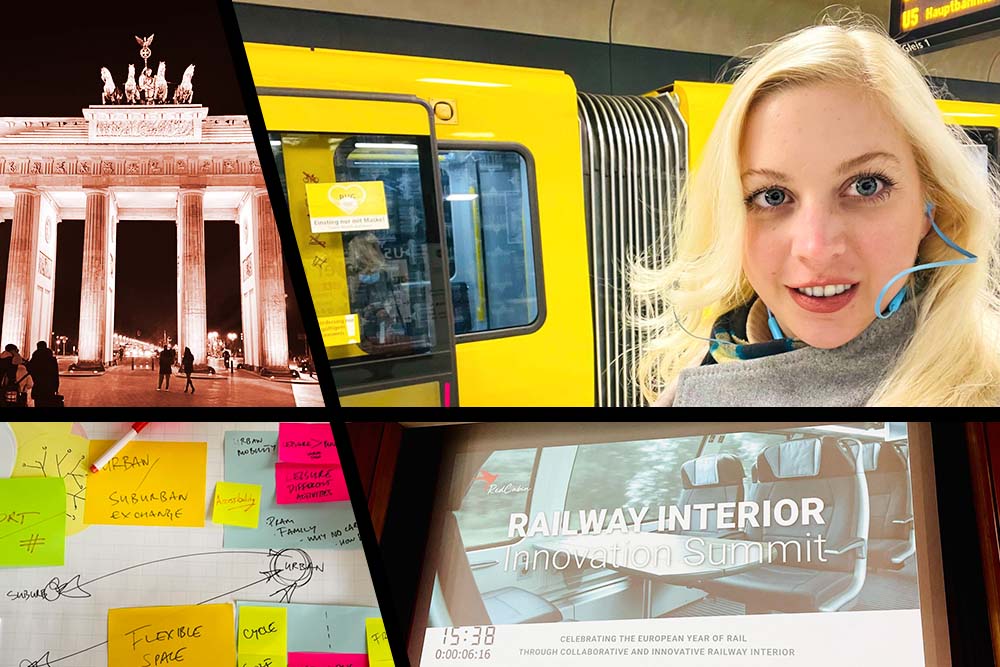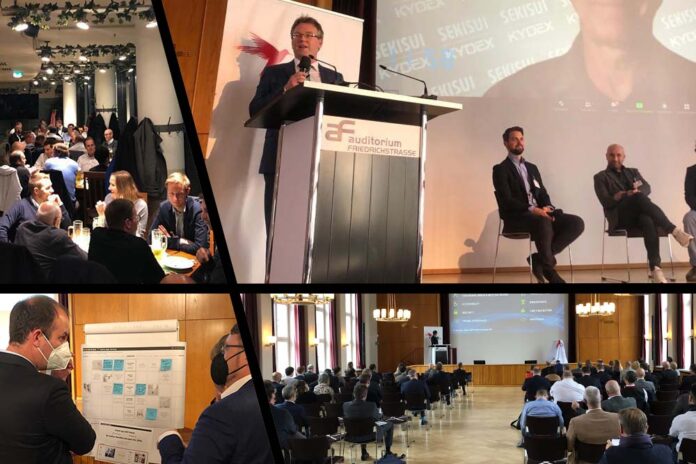An overseas conference can mean a lot of things to a lot of people.
It can mean international travel, the shaking of hands, the building of important face-to-face business relationships.
And yet, because of Covid-19, they are still a distant memory for many.
But as restrictions lift, a resurgence in global thinking, and a desire for international trade is coming back – and the good news is that the world’s eyes are looking our way.
That may come as a surprise for many. We have spent a lot of time looking at headlines about Brexit and Covid-19, all whilst under lockdown or social distancing measures. But now some of our industry’s representatives have been able to reach out and meet international counterparts for the first time in years – and the message coming back to the UK is that there is real optimism out there.
The world reopening for business
Daisy Chapman-Chamberlain is the rail lead for Innovate UK KTN, an organisation which prides itself in bringing Britain’s innovative organisations together, providing them with support and linking them to much-needed funding.
She recently returned from the Railway Interior Innovation Summit, in Berlin. There, the space bustled with business delegates keen to see and share ground-breaking innovations set to shape the experience of millions of rolling stock users – freight and passenger alike.

“Getting back to the UK, the main thing I want to say is the world is truly opening up,” Daisy said. “People are talking in person again, across the world, and there’s a sense of inspiration and connectivity.”
She said Innovate UK KTN had been keenly involved in building up a strong business network of expertise, but, because of recent travel restrictions, some of that had been curtailed. “Up until now there have been some national summits and exhibitions. Some of them have been in person, and others virtual. This, however, was the first time I had been able to safely go overseas and meet with our international colleagues face-to-face,” she said.
“It came about because the organisers of the Railway Interior Innovation Summit, RedCabin, contacted us. They said they were keen to strengthen the connection they and their exhibitors had with the UK rail supply chain.
“What started as a simple message via LinkedIn then became an important, ongoing conversation between ourselves and our international rail colleagues. They said they’d really like it if Innovate UK KTN got involved and saw what was happening at their conferences. Their first was to be in Berlin, and then another later in the US before returning to Europe.”
It didn’t take much persuading to book a ticket. “Building up international contacts is important to me, and Innovate UK KTN – and interior innovation is really interesting,” Daisy said.

A meeting of minds
The event itself didn’t disappoint.
“When I got there and had a chance to engage, it was clear the industry was ready to innovate, after Covid,” Daisy said. “Travel patterns were changing, and the industry was already looking at how we can, accordingly, adapt and change the rolling stock of the future.
“It was clear in a very short time that everyone was ready to work together, from all different countries, and combine ideas. It was a very positive experience.
“Sustainability played an important part in all of this, as you might expect. But what became clear very quickly, from the businesses I saw representing the UK and overseas, was that sustainability is not just about power – which of course is important – but about other elements of rolling stock design.
“You really got the message sustainability was about the whole build and the whole life of the vehicle, and everything that goes into that in terms of components.”
She said the sharing of ideas proved particularly powerful – and a refreshing change after a period where rail’s design minds had to speculate and come up with concepts in relative isolation. “A big part of the conference was about breakout sessions, where we discussed the rolling stock of the future and the needs of passengers,” Daisy said.
“We thought about how things had changed. There is the possibility, for example, that we aren’t going to see the return of the traditional nine-to-five commuter, and even if we do it might be for three rather than five days a week.
“So if that becomes the case, the question is not only how do we structure timetables and ticketing, but specifically how could the interiors themselves be better suited in what might become a primarily leisure market?
“Analysing the passenger movements on trains might point to a lot of people using suitcases. So you can build more luggage racks, and that’s fine – but what about if that area suddenly needs to be used for something such as a bicycle? Space might need to be adaptive.
“Active travel was something we really focused on, and is becoming more and more relevant. For instance, I’ve heard people talk about the need to accommodate everything from golf clubs to surf boards to better accommodate this new market.
“At the end of the day if people can’t take their items with them on a train, then they are going to resort to using a car. And for the sake of our train operating companies and the environment that’s not something we want.
“Outside of active travel, there are other ways to make use of trains that adjust for a post-pandemic and greener world. For instance, one of the main ideas people were considering was the use of trains to cater for freight, such as parcels.
“It’s all about making the best use of space to help passengers, and look to new sources of revenue.”
The UK embarking on a new business journey
And when it came to such innovation, the UK was given high praise from delegates from other countries. “I was one of the few UK representatives there and yet, time and again, we were encountering a wish from colleagues in areas like France, Switzerland and Finland to tap into UK innovation,” Daisy said.
“The world is definitely opening up again in terms of rail, rail innovation and what’s possible. And we often have the technology to meet it.
“One good example is that some delegates I was talking to really wanted capacity and fill indicators for their trains, indicating if a carriage is full. Technology like that is something we see fairly often in the UK, but it is just not as prevalent in Europe.”
So, with this wish for UK involvement being so strong internationally, what is the advice from Daisy and Innovate UK KTN? “Well, we’re more than happy to help businesses connect and grow,” she said.
“At Innovate UK KTN we can connect businesses with one another and link them to programmes and people from the likes of the Department for International Trade and Innovate UK.
“But, where you feel it is safe, I have to recommend seeing if you can attend an event yourself.
“When it comes to building up business, you simply can’t beat meeting people face-to-face. So much value comes out of those casual conversations you don’t prepare for. Ones you have over a cup of tea, where you suddenly realise there’s really good synergy and the opportunity to build something great.”
About
Innovate UK KTN exists to connect innovators with new partners and new opportunities beyond their existing thinking – accelerating ambitious ideas into real-world solutions. Innovate UK KTN is part of the Innovate UK Group – the UK’s innovation agency.
Images courtesy of Innovate UK KTN and RedCabin



































 0113 2082620
0113 2082620 info@railbusinessdaily.com
info@railbusinessdaily.com 15 Mariner Court, Wakefield WF4 3FL
15 Mariner Court, Wakefield WF4 3FL

